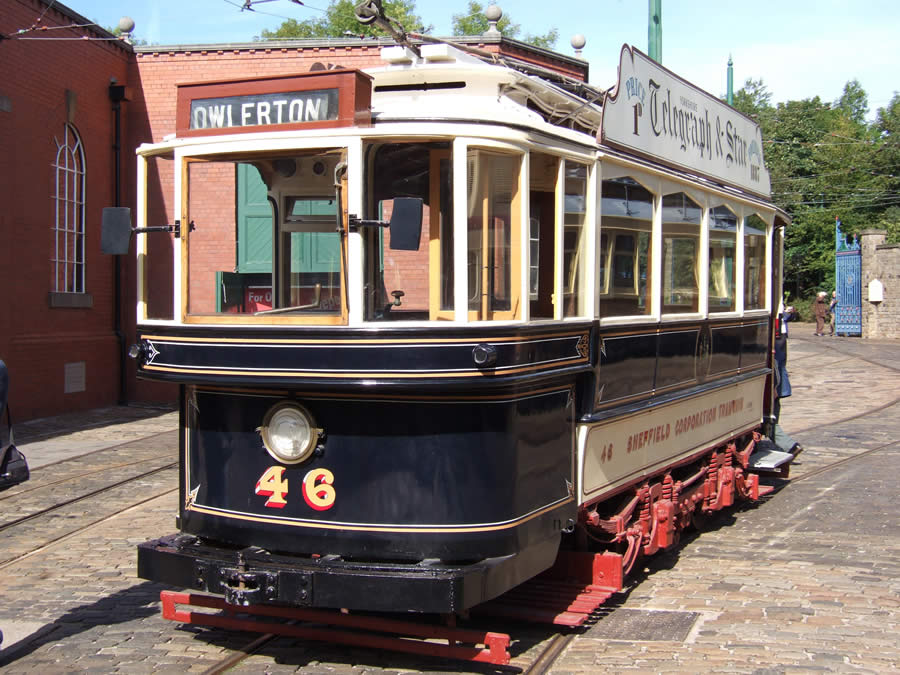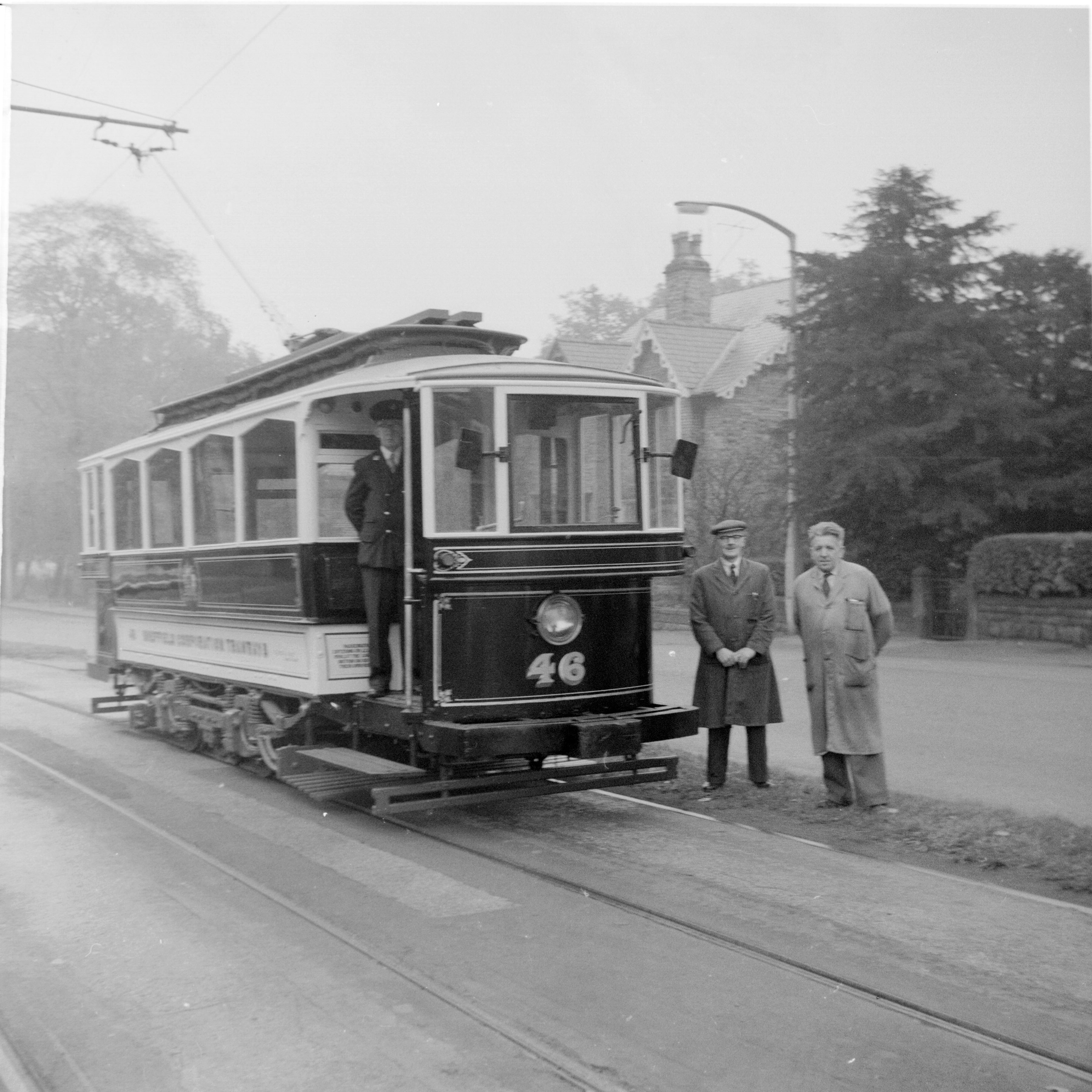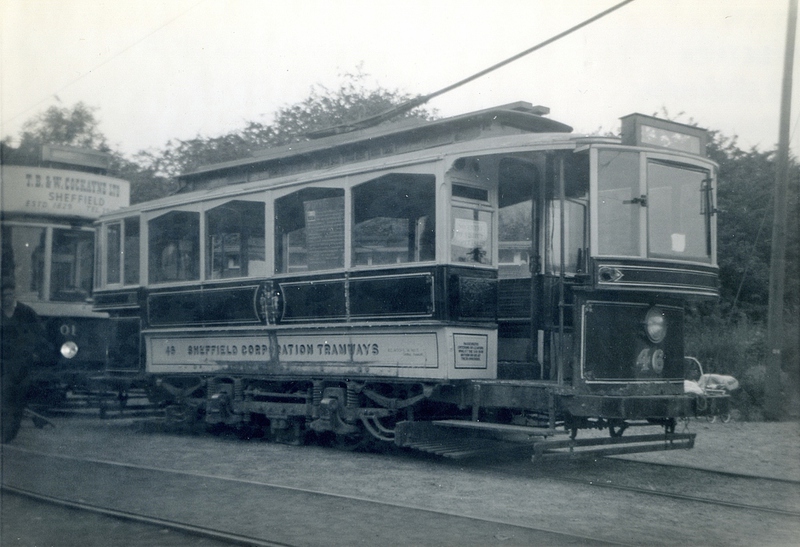Sheffield Corporation No. 46

Photo: Jim Dignan
Despite its generally hilly terrain, the bulk of Sheffield’s passenger fleet consisted of double deck cars. Sheffield 46 was a rare exception, dating back to the earliest days of electrification when an order for twelve single deck trams was placed with G F Milnes for use on the particularly steep Walkley route.
The rationale for adopting smaller, single deck tramcars on these routes was largely to minimise the possibility of accidents on the exceptionally steep gradients and sharp curves, though it was also felt that the reduced time needed for loading and unloading might permit a quicker service than that provided by double deck cars. Elsewhere on the system single deck tramcars were required on a small number of other routes where the headroom under low railway bridges did not provide enough clearance for double deck cars.
These single deck tramcars were built as unvestibuled saloons that were originally equipped with 5 Tudor-style windows and a clerestory roof housing 15 small glass roof lights on each side. The 28-seat tramcar shared not only the same “Tudor” window design as contemporary double deck cars but also, more unusually, a similar design of trolley standard. Originally the tramcar was designed without any internal compartments and was fitted with longitudinal seating. The headlamps were carried on the end of each roof canopy at this stage.
Specification
- Type of tram
- Built as single deck unvestibuled electric passenger tramcar with 5 window saloon.
- Livery
- Prussian blue and cream
- Seating capacity
- 22
- Date built
- 1899
- Manufacturer of body
- G.F. Milnes & Co./Sheffield Corporation
- Manufacturer of truck
- Brill 21E
- Gauge
- 4’ 8½”
- Motor
- GE58 2 x 40 hp
- Controller
- BTH B510A
- Current collector
- Trolley
- Modification
Was converted into works car/snow plough in 1921 which shortened the body by one bay and carried the numbers 97 (1924) and 275 (1926) before being renumbered as 354 in 1937. At this time the car’s livery was grey. A number of original features were replaced including its Peckham cantilever truck and B13 controllers.
Protruding vestibules were added in 1940.- Withdrawn from service
1950 placed in storage in Tinsley deport, where it was restored to passenger car 46.
- Subsequent history
Was operational at Crich every year between 1964 and 1973 apart from 1969.
- Restoration history
Restored as passenger tram in 1959 or 1960 using seats and other fittings from the lower deck of Sheffield 133, which had previously been used as a tea room at Calver Sough. Brought to Crich in October 1960
- Current status
- In store since 2005
- Date started operating at Crich
- 1964. Has operated in 9 seasons, most recently in 1973.
- Total mileage covered at Crich
- 542
- Current location
- Off-site storage facility
- Future plans
Funding has now been secured to support the restoration of Sheffield 46 but a full programme of work in the workshops means that it will be some time before this major project can commence.
- 1899 – 1921Operational on original tramway
- 1921 – 1950Converted into snowplough
- 1950 – 1958In storage
- 1958 – 1960Undergoing restoration
- 1960Operational on original tramway
- 1960 – 1964On display
- 1964 – 1968Operational at Crich
- 1969Not in service
- 1969 – 1973Operational at Crich
- 1974 – 2005On display
- 2005 –In storage



